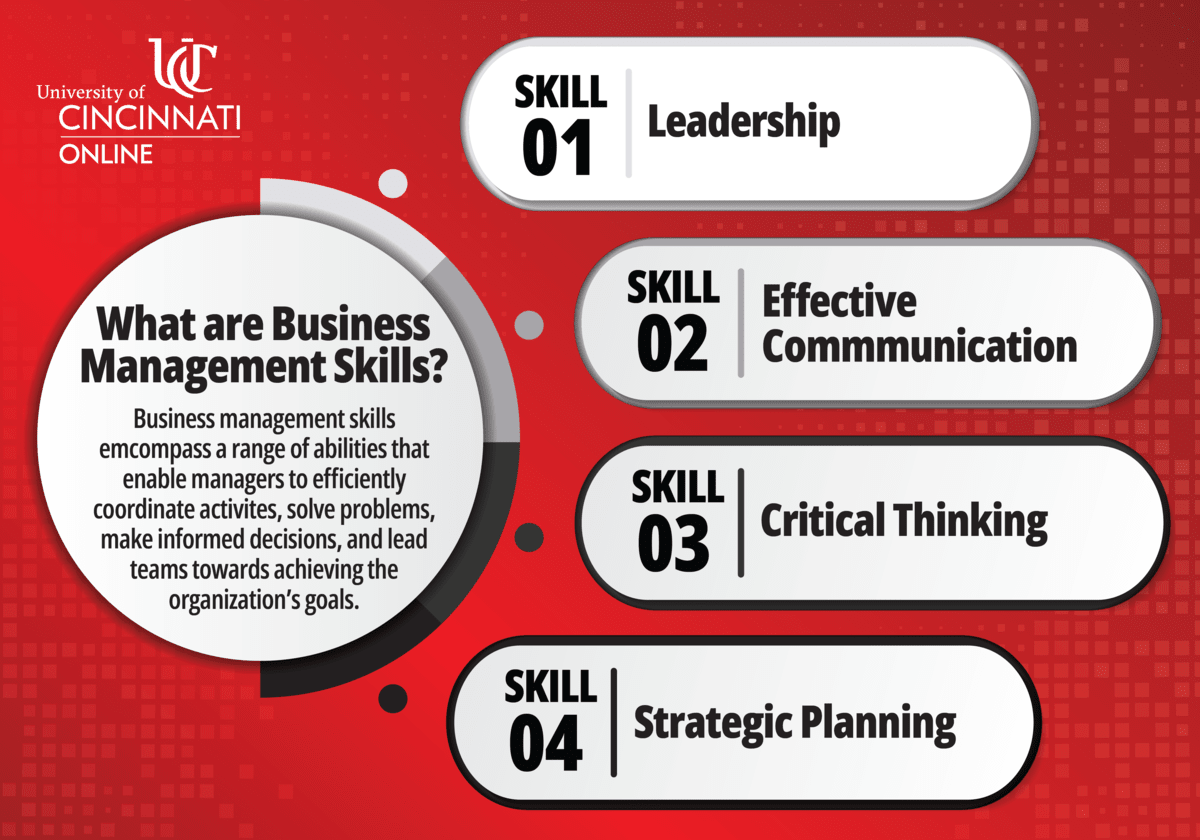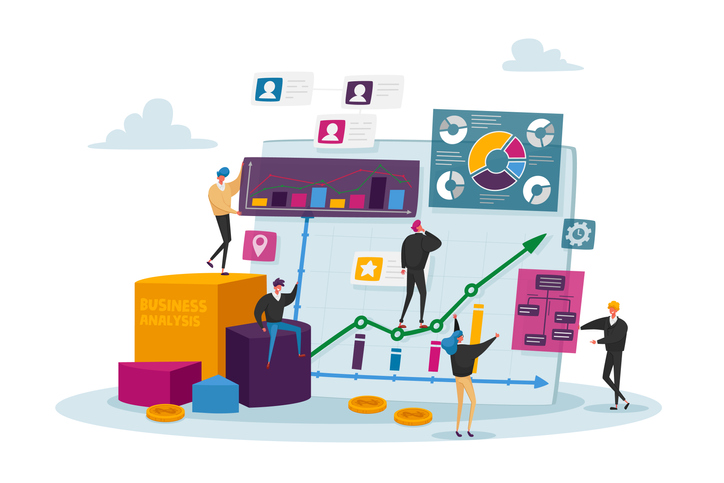Why Leading SAFe Is Essential for Scaling Agile in Modern Enterprises
Wiki Article
SAFe Certification: Equipping Leaders in Scaled Agile Frameworks
The landscape of task monitoring is evolving, and SAFe Certification stands as a crucial element for leaders seeking to implement the Scaled Agile Framework effectively. This accreditation equips professionals with crucial skills to cultivate cooperation and innovation within their teams, inevitably boosting business performance. The trip to coming to be an accredited SAFe leader entails even more than just getting expertise; it includes comprehending the nuanced functions and obligations within agile atmospheres. As we check out the ins and outs of SAFe Qualification, the implications for management performance and business success warrant deeper exam.Comprehending SAFe Accreditation
SAFe accreditation, which represents Scaled Agile Framework qualification, is a credentialing program developed to gear up specialists with the knowledge and skills needed to execute dexterous practices at scale within their companies. The SAFe framework provides a structured strategy that helps organizations straighten their groups and manage larger projects successfully, making sure that dexterous methodologies are used continually throughout various degrees.The qualification incorporates various functions, including SAFe Agilist, SAFe Practitioner, and SAFe Program Specialist, each concentrating on various facets of the framework. The program emphasizes the value of lean principles, constant delivery, and collaboration amongst groups, fostering a setting conducive to development and efficiency.
Participants undergo rigorous training that integrates academic understanding with sensible application, improving their capability to lead active improvements. The curriculum includes subjects such as dexterous groups, program execution, and profile administration, ensuring that licensed experts are skilled in all facets of the SAFe approach.
Benefits of SAFe Accreditation
Acquiring a Secure certification provides many benefits for specialists looking to improve their occupations in dexterous task management. First and primary, it furnishes people with a thorough understanding of the Scaled Agile Framework, enabling them to effectively execute nimble principles across big companies. This understanding is important as services progressively embrace nimble approaches to enhance productivity and adaptability.Additionally, SAFe certification enhances a prospect's bankability and occupation potential customers. As organizations seek certified specialists to lead their active makeovers, licensed individuals can command greater incomes and stand apart in a competitive work market. In addition, acquiring this accreditation demonstrates a dedication to constant knowing and professional growth, which is extremely concerned by employers. SAFe DevOps certification.
Networking chances also emerge from SAFe accreditation, connecting people with a community of similar experts and industry leaders. This can cause collaboration, knowledge, and mentorship sharing, more enhancing one's specialist experience.
Finally, licensed experts are often much better equipped to promote a society of collaboration and technology within their teams, driving effective outcomes in nimble tasks. In general, the advantages of SAFe certification are manifold, making it an important investment for those in the active task management domain name.
The Qualification Process
The journey to attaining SAFe accreditation entails an organized process created to make certain candidates are well-prepared for nimble management duties. This procedure generally begins with picking the ideal SAFe certification that lines up with one's occupation desires and business needs, such as SAFe Agilist, SAFe Specialist, or SAFe Program Expert.Prospects are after that urged to take part in a detailed training course, normally performed by a licensed SAFe instructor - SAFe Agilist. These programs cover vital ideas, concepts, and methods of the Scaled Agile Structure, supplying individuals with useful understandings and functional expertise
Complying with the training, candidates should pass an accreditation examination to demonstrate their understanding and proficiency in applying SAFe concepts. The tests are made to analyze not just understanding however likewise the ability to execute agile practices effectively within a scaled setting.
As soon as accredited, individuals access to a wide range of sources, including area networks and recurring discovering chances, which even more boost their agile management capacities. Preserving certification requires continuous specialist advancement, making certain that leaders stay current with advancing practices within the structure. Inevitably, the certification procedure is a strenuous yet fulfilling path for those intending to succeed in dexterous leadership.
Responsibilities and roles
Reliable implementation of the Scaled Agile Framework (SAFe) depends heavily on plainly defined roles and responsibilities within a company. These duties are crucial for ensuring positioning, performance, and efficient partnership throughout groups.At the team level, vital duties consist of the Scrum Master, Product Proprietor, and Agile Team Members. The Scrum Master helps with the agile procedure, guaranteeing that the group follows the SAFe concepts while eliminating obstacles. The Item Owner is liable for taking full advantage of the value of the product and taking care of the backlog to straighten with service objectives. Agile Group Members contribute their specialized abilities to deliver premium increments.
At the program degree, the Launch Train Designer (RTE) plays an important function in coordinating the Agile Launch Train (ART), guaranteeing smooth program implementation and positioning across multiple teams. Furthermore, the system engineer and local business owner provide technical guidance and critical vision, specifically.
Continual Enhancement in SAFe
Continual renovation is a keystone of the Scaled Agile Framework (SAFe), driving companies to enhance their procedures, items, and general performance. By cultivating a culture of constant renovation, SAFe motivates groups to consistently analyze their end results and workflows, determine inefficiencies, and implement strategies for enhancement. This iterative procedure not only enhances productivity however additionally lines up teams with the organization's strategic objectives.Central to this method are the Inspect and Adapt (I&A) workshops, which provide structured chances for reflection and understanding. Throughout these sessions, teams evaluate performance metrics, go over difficulties, and create workable understandings to direct future models. Additionally, using Agile Release Trains (ARTs) promotes cross-functional partnership, allowing teams to share ideal techniques and drive cumulative improvement.
Furthermore, Lean-Agile management plays a critical function in promoting a way of thinking of continual enhancement. Leaders are tasked with cultivating a setting where testing is encouraged, and failings are seen as learning possibilities. By embedding continuous renovation into the business culture, SAFe encourages groups to remain dexterous and responsive to changing market needs, inevitably improving their capability to supply worth to customers.

Final Thought
To conclude, SAFe Certification works as a vital device for leaders aiming to implement dexterous methods effectively within their companies. By fostering a thorough understanding of the Scaled Agile Framework, this certification improves advancement, project, and cooperation end results. It opens up avenues for expert development and networking amongst sector experts, guaranteeing that certified experts continue to be adept in navigating the complexities of today's vibrant organization landscape. Ultimately, SAFe Accreditation adds dramatically to organizational success and resilience.The landscape of task monitoring is evolving, and SAFe Certification stands as a pivotal aspect for leaders looking for to carry out the Scaled Agile Structure successfully.Getting a Secure qualification supplies countless benefits for specialists looking to boost their jobs in dexterous project administration. The Scrum Master helps with the nimble process, guaranteeing that the team adheres to the SAFe concepts while eliminating impediments. By embedding continuous improvement into the business culture, SAFe equips teams to remain agile and receptive to changing market demands, inevitably enhancing their ability to deliver worth to consumers.
|
Master Agile Practices With Comprehensive SAFe Qualification
In an increasingly complex business landscape, mastering Agile techniques with extensive SAFe certification has actually become an important proficiency for professionals intending to improve organizational performance. This qualification not only offers a deep understanding of the Secure structure however also grows vital skills for cultivating partnership and alignment amongst teams. As organizations look for to navigate the obstacles of fast change, the execution of Risk-free principles uses a pathway to boosted outcomes. Nonetheless, the journey to certification entails more than simply theoretical expertise; it needs a strategic strategy to application that can considerably influence company dexterity. What does this involve?Recognizing SAFe Framework

At its core, the Risk-free framework makes up four levels: Team, Program, Big Service, and Portfolio. Each level addresses particular elements of Nimble shipment, from managing small groups of programmers to looking after numerous programs and straightening critical campaigns with organization purposes.
SAFe motivates partnership among cross-functional teams, fostering an environment where continuous renovation and innovation are paramount. By stressing placement, transparency, and built-in quality, the structure outfits companies to respond swiftly to market changes while supplying worth to clients.
Moreover, SAFe sustains like it numerous methods, such as Scrum and Kanban, enabling companies to tailor their approach according to details job requirements. This adaptability ensures a robust framework for companies aiming to thrive in a swiftly progressing company landscape.
Benefits of SAFe Qualification
Often demanded in the Agile area, SAFe qualification uses many benefits for professionals and organizations alike. One of the main benefits is the enhancement of abilities and understanding in applying the Scaled Agile Structure (Secure), which outfits individuals with the devices required to drive successful Agile transformations. This accreditation indicates a dedication to specialist advancement, making prospects much more affordable in the task market.For companies, having certified experts fosters a culture of constant improvement and partnership, vital for adapting to transforming market demands. It allows teams to align their job with calculated objectives, ultimately boosting productivity and effectiveness. Firms with a higher proportion of SAFe-certified staff members typically experience lowered time-to-market and enhanced high quality of deliverables.
Moreover, Risk-free accreditation helps with networking chances with other Agile experts, enabling the exchange of finest techniques and experiences (SAFe Lean Portfolio Management). This collaborative network can substantially add to individual and organizational growth. In summary, acquiring Secure qualification not only enhances individual abilities however additionally reinforces the total Agile maturation of an organization, resulting in sustainable success in today's dynamic company atmosphere
Secret Elements of SAFe
Structure on the benefits of Secure qualification, recognizing the vital parts of the Scaled Agile Framework is vital for properly implementing its principles. The SAFe structure consists of 4 key degrees: Group, Program, Big Option, and Profile. Each level addresses different aspects of agile practices, facilitating alignment and delivery throughout the company.At the Group level, cross-functional teams work collaboratively using Active techniques, such as Scrum or Kanban, to deliver incremental worth. The Program level focuses on the Agile Release Train (ART), which is a long-lived team of Agile teams that plans, commits, and implements with each other. The Big Option level addresses complex remedies that call for several ARTs to operate in concert, ensuring control and combination.
Getting Ready For SAFe Certification
Planning for Secure accreditation requires a critical technique to guarantee a comprehensive understanding of the structure. Acquaint on your own with the core concepts and values of the Scaled Agile Framework (Secure) Evaluation resources supplied on the Scaled Agile site, consisting of the Risk-free framework paperwork, case researches, and whitepapers, to develop a strong foundation.Following, think about enrolling in an official Secure training course. These training courses, led by accredited SAFe Program Consultants (SPCs), offer structured finding out experiences that cover practical applications and necessary concepts. Engaging with teachers and peers can boost your grasp of the material.
Additionally, experiment example examination concerns to familiarize on your own with the style and sorts of inquiries you may come across. Signing up with study teams or discussion forums can help with understanding exchange and give support from fellow candidates.
Using SAFe in Organizations
Implementing the Scaled Agile Framework (Risk-free) within companies demands a structured technique that aligns teams and processes toward an usual objective. The successful application of SAFe begins with establishing a clear understanding of its principles, including collaboration, alignment, and transparency. Organizations needs to initially examine their existing procedures and determine areas for improvement, guaranteeing they are prepared for the social shift that SAFe requires.Next, leadership commitment is important. Leadership should actively support the transition by promoting a culture of continuous learning and adaptability. Training and certification for teams aid outfit participants with the essential abilities and expertise to run successfully within the Risk-free framework. This includes establishing Agile Launch Trains (ARTs), which act as the foundation for providing value across the company.
Routine planning sessions, such as Program Increment (PI) preparation, must be conducted to prioritize and integrate teams work. In addition, leveraging metrics to determine progress and efficiency is vital for continuous improvement. By continually applying SAFe concepts and practices, companies can accomplish greater dexterity, improve collaboration, and eventually drive better organization results. Embracing this structure positions companies to respond promptly to market modifications and consumer requirements.

Final Thought
In conclusion, mastering Agile practices with extensive Risk-free accreditation dramatically boosts specialist capacities and adds to business performance. The expertise got from recognizing the Secure structure, along with its crucial elements, enhances and helps with successful transformations collaboration amongst groups.The SAFe (Scaled Agile Structure) framework serves as an organized strategy for carrying out Active methods at scale across huge companies. One of the main benefits is the improvement of abilities and understanding in executing the Scaled Agile Structure (Secure), which furnishes individuals with the devices essential to drive successful Agile changes. In recap, obtaining Secure qualification not just improves private abilities but additionally reinforces the general Agile maturation of a company, leading to sustainable success in today's vibrant service environment.
Structure on the advantages of SAFe qualification, comprehending the key parts of the Scaled Agile Framework is vital for properly executing its principles.Carrying Out the Scaled Agile Framework (Secure) within organizations demands a structured strategy that lines up groups and processes towards a typical objective.
|
Development Your Career With SAFE Accreditation: Agile Competence Unlocked
In today's rapidly advancing company landscape, getting SAFe accreditation can significantly improve your job trajectory by outfitting you with necessary agile know-how. This certification not only offers as a testament to your efficiency in dexterous approaches however additionally positions you as a driver for business change. As business significantly look for experts who can lead agile improvements, recognizing the pathways to obtain this accreditation ends up being crucial. The real concern exists in just how this credential can distinctly impact your career and open unforeseen doors in the active domain name.Comprehending SAFe Accreditation
SAFe Accreditation works as a critical qualification for professionals looking for to boost their jobs in active job administration. Established by Scaled Agile, Inc., the Scaled Agile Framework (Secure) supplies a comprehensive approach to applying dexterous methods across large companies, making it necessary for experts aiming to navigate intricate job environments effectively.The qualification procedure encompasses numerous degrees, including Secure Agilist, SAFe Professional, and SAFe Program Specialist, each targeting different duties within active teams. These qualifications are created to equip specialists with the understanding and tools essential to lead nimble transformations, foster cooperation across groups, and enhance project distribution outcomes.
Recognizing Risk-free Qualification includes recognizing its focus on aligning method with execution, advertising a culture top article of constant improvement, and leveraging active concepts at range. This structure not just improves specific competencies yet also adds to organizational agility, making it possible for companies to react swiftly to market modifications and customer demands.
Attaining SAFe Accreditation signifies a commitment to specialist growth and a strong structure in agile approaches, placing individuals as important properties in their organizations. By accepting this qualification, specialists can improve their capability, ensuring they continue to be affordable in a rapidly progressing work market.
Benefits of SAFe Certification
Acquiring Secure Certification provides many benefits for professionals in the nimble job monitoring sector. This certification not only improves private qualifications but likewise demonstrates a dedication to mastering the Scaled Agile Framework, which is increasingly recognized by employers. With a Secure accreditation, professionals can confirm their understanding and skills in agile techniques, making them much more affordable in the task market.One of the key benefits is the capacity to lead agile transformations within organizations. Certified individuals are geared up with the tools and techniques required to carry out and scale active methods successfully, driving effectiveness and efficiency. Companies with SAFe-trained specialists often experience enhanced positioning throughout teams, promoting better cooperation and technology.
Furthermore, Risk-free Certification opens up doors to networking possibilities within the agile community. Experts can get in touch with similar individuals, share best techniques, and stay updated on sector patterns. The certification also gives accessibility to exclusive sources, including workshops and webinars, which can further improve one's competence.
Eventually, acquiring Secure Accreditation encourages experts to progress their professions, add meaningfully to their companies, and lead the charge in agile quality. SAFe DevOps certification.
Pathways to Obtain Qualification

To begin, candidates normally engage in a Secure training course, which offers as the fundamental step for qualification. These courses are assisted in by SAFe Program Consultants (SPCs) and cover vital principles, techniques, and roles within the Secure structure. After completing the training, prospects must pass an accreditation test to validate their understanding and abilities.
There are multiple accreditations readily available, such as SAFe Agilist (SA), Risk-free Expert (SP), and SAFe Scrum Master (SSM), to name a few. Each qualification calls for particular training sessions and assessments, permitting professionals to choose a path that straightens with their job goals.
Furthermore, preserving Secure accreditation requires recurring education and renewal, ensuring that specialists stay present with progressing Agile techniques. By strategically selecting the suitable training and accreditation courses, people can dramatically enhance their knowledge and occupation trajectory within the Agile landscape.
Real-World Applications of SAFe
Carrying out next the Secure structure in companies has actually verified to be very reliable in boosting performance and placement throughout groups. This technique promotes cooperation amongst different divisions, enabling teams to work towards an unified collection of objectives. By damaging down silos and promoting communication, SAFe makes it possible for companies to react quickly to market modifications and client needs.
Additionally, SAFe contributes in enhancing task exposure with metrics and reporting tools, permitting stakeholders to make educated decisions. It additionally motivates a culture of continuous improvement, advertising normal retrospectives and adaptation of practices. Inevitably, the real-world applications of Risk-free show its adaptability and efficiency in driving successful end results throughout numerous industries, making it an essential structure for modern companies.
Profession Innovation Opportunities
The adoption of the SAFe structure not only improves organizational efficiency but likewise opens up substantial career innovation chances for specialists within the Agile and job monitoring fields. As companies increasingly welcome Agile methodologies, the need for SAFe-certified professionals remains to climb, producing an affordable edge for those furnished with this certification.SAFe accreditation supplies experts accessibility to a variety of functions, consisting of Agile Release Train (ART) functions, Scrum Masters, and Launch Train Engineers. Moreover, individuals can change into leadership settings such as Program Managers or Portfolio Supervisors, thereby enhancing their duties and impact within the company. The accreditation also demonstrates a commitment to continual discovering and flexibility, top qualities extremely valued by employers.
Additionally, experts with SAFe accreditation commonly enjoy higher gaining capacity. Sector reports indicate that qualified people typically regulate wages that go beyond those of their non-certified peers. Furthermore, the networking opportunities afforded by Risk-free areas can lead to valuable connections and profession prospects. SAFe DevOps certification.
Final Thought
To conclude, acquiring Risk-free accreditation considerably enhances professional credentials in the world of dexterous methods. This accreditation not only helps with mastery of agile techniques yet likewise promotes opportunities for job innovation throughout different roles, consisting of Scrum Masters and Program Supervisors. By furnishing individuals with essential abilities and understanding, Risk-free certification cultivates management capabilities necessary for driving effective nimble transformations within companies, eventually contributing to better earning capacity and valuable links within the active community.Getting Risk-free Certification supplies various advantages for experts in the nimble task administration arena. With a Risk-free certification, specialists can verify their knowledge and abilities in agile methods, making them much more affordable in the job market.
These training courses are helped with by SAFe Program Professionals (SPCs) and cover vital principles, methods, and duties within the Risk-free structure.In conclusion, getting SAFe accreditation significantly improves specialist credentials in the world of agile methods. By equipping individuals with crucial skills and understanding, Secure certification promotes management capabilities needed for driving effective agile improvements within companies, ultimately contributing to higher earning possibility and valuable connections within the dexterous community.
} Report this wiki page